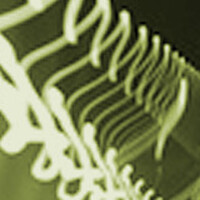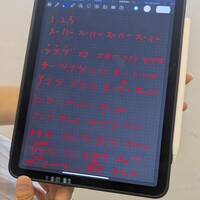Open Studio? Operating Theatre? Or Fish Tank? 開放工作室?手術室?還是魚缸?
Blog post
這是我第一次以學者的身分參加「跨藝」,在排練教室一旁、觀察來自三個城市的四位編舞家以及學生舞者,共創合作。因為臺藝大國際事務處行政工作的關係,我無法在第一週加入觀察行列,只能在第二與第三週參與。一開始我覺得不自在,雖然我了解「跨藝」的精神,但是我還覺得像是個外來者。我擔心自己的出現、注視與移動會讓編舞者與舞者覺得不自在,甚至是造成干擾。
This is my first time to participate in ArtsCross as a scholar. I sat in the rehearsal room and observed four choreographers and student dancers from three cities creating collaborations. Due to the administrative work of the International Affairs Office of National Taiwan University of Arts, I was unable to join the observation team in the first week, and could only participate in the second and third weeks. I felt uncomfortable at first. Although I understood the spirit of ArtsCross, I still felt like an outsider. I worry that my presence, gaze and movement will make the choreographer and dancers feel uncomfortable or even disruptive.
我是舞蹈研究者,也是舞蹈評論者,更重要的是、我具有舞者的訓練背景。我習慣在劇場(或是展演場域),觀賞完成的編舞作品。我習慣將舞蹈創作的過程視為創作團隊內部的活動,而非開放給外來人士、任人品頭論足的活動。雖然在舞蹈研究過程中,研究者會邀請編舞者與舞者(以受訪者的身份)分享舞創作或是排練的經驗。但這是受訪者整理過後、提供的訊息,不同於研究者現場的觀察與資訊擷取,更不同於此次跨藝學者在為期三週、游移於四組團隊之間的觀察。
I am a dance researcher and a dance critic, and more importantly, I have a training background as a dancer. I am used to watching completed choreographic works in theaters (or performance forums). I am used to viewing the process of dance creation as an activity within the creative team, rather than an activity open to outsiders to judge. Although during the dance research process, the researcher will invite choreographers and dancers (as interviewees) to share their dance creation or rehearsal experiences. However, this is information compiled and provided by the interviewees. It is different from the researcher's on-site observation and information collection, and it is also different from the observation of the "ArtsCross" scholar who moved between four groups during the three-week period.
我相信在「跨藝」的歷史中,還是會有編舞者、舞者與學者,對觀察舞蹈創作與排練的安排感到不自在。以我為例,這是因為我習慣分析、評論或是觀賞公開場域發表的完成舞作。觀察舞蹈創作的過程,對我來說好像干擾別人的工作過程,好像窺探私密的藝術創發。我帶著戒慎恐懼的心情,在一旁觀察:我對自己的一舉一動感到敏感,我也會忍不住設身處地幫編舞者與舞者著想,我也在觀察其他學者的舉動。在我看來、這情況有點像是介於藝術家的「開放工作室」(open studio)、「手術室」(operating theatre),甚至是「魚缸」的狀態。
- 「開放工作室」:參觀者進入藝術家安排好的環境,觀察並了解藝術家工作的狀況。
- 「手術室」:病人躺在手術台上,在手術、麻醉與護理人員的注視下,無助地展示身體的傷與痛、美與醜、正常與異常。
- 「魚缸」:透明水缸中的生物自成一個生態系,看似自在悠遊、但是隨時感受到魚缸外的注視並且可能受到影響。
I believe that throughout the history of ArtsCross, there will still be choreographers, dancers, and scholars who feel uncomfortable about the arrangement of observing dance creation and rehearsal. In my case, this is because I am used to analyzing, commenting, or watching completed dance works performed in public. Observing the process of dance creation seems to me like interfering with other people's work process, like peering into private artistic creation. I watched with caution and fear: I was sensitive to every move I made, and I couldn’t help but put myself in the shoes of the choreographer and dancer. I was also observing the actions of other scholars. In my opinion, this situation is a bit like an artist's “open studio”, “operating theater”, or even a “fish tank” state.
1. “Open Studio”: Visitors enter the environment arranged by the artist to observe and understand the artist's working conditions.
2. “Operating Room”: The patient lies on the operating table, helplessly displaying the injuries and pain, beauty and ugliness, normality and abnormality of the body under the watchful eyes of the surgery, anesthesia and nursing staff.
3. “Fish Tank”: The creatures in the transparent water tank form an ecosystem of their own. They seem to be swimming freely, but they can feel the gaze from outside the fish tank at any time and may be affected.
以上三者都有展示的特質,不論是為了藝術創作、身體健康還是水族生態,也都有各自發展的方式,都是希望漸入佳境、去蕪存菁。這當中微妙的權力關係、人際互動、相互體諒與支持,頗為耐人尋味。所以、我在想:是誰在看誰?我在觀察編舞者與舞者的時候,我也在觀察自己與其他學者。研究者的我發現因為我的養成與訓練,我就是無法單純地「觀察」、我永遠都是多重視角、多重考量。我是人、我是舞者、我是觀眾、我是教師、我是研究者、我是評論者。我的成長與學習史,影響我的觀察、思考以及我的行為與寫作。因此在過去兩週我看到四位編舞家與舞者的工作狀況是立體而豐富的,即便是片段的創作排練、也是細緻且繁複的組合。一首舞蹈編創作品就像是一串鑽石項鍊:單顆美鑽是在極大壓力下成型與雕琢,一串項鍊則是系列美鑽的構思與安排。
The above three all have their own characteristics. Whether it is for artistic creation, physical health or aquatic ecology, they also have their own development methods. They all hope to gradually get better and eliminate the bad while retaining the good. The subtle power relationships, interpersonal interactions, mutual understanding and support among them are quite intriguing. So, I'm thinking: Who's looking at who? As I observe choreographers and dancers, I also observe myself and other scholars. As a researcher, I found that because of my upbringing and training, I just couldn't simply "observe". I always had multiple perspectives and multiple considerations. I am a human being, I am a dancer, I am a spectator, I am a teacher, I am a researcher, I am a critic. My growth and learning history affects my observations, thinking, and my actions and writing. Therefore, in the past two weeks, I have seen the working conditions of the four choreographers and dancers being three-dimensional and rich. Even fragments of the creative rehearsals are meticulous and complicated combinations. A choreographic dance work is like a diamond necklace: a single diamond is shaped and carved under great pressure, while a necklace is the conception and arrangement of a series of diamonds.
Posted by

Yu-ling CHAO

